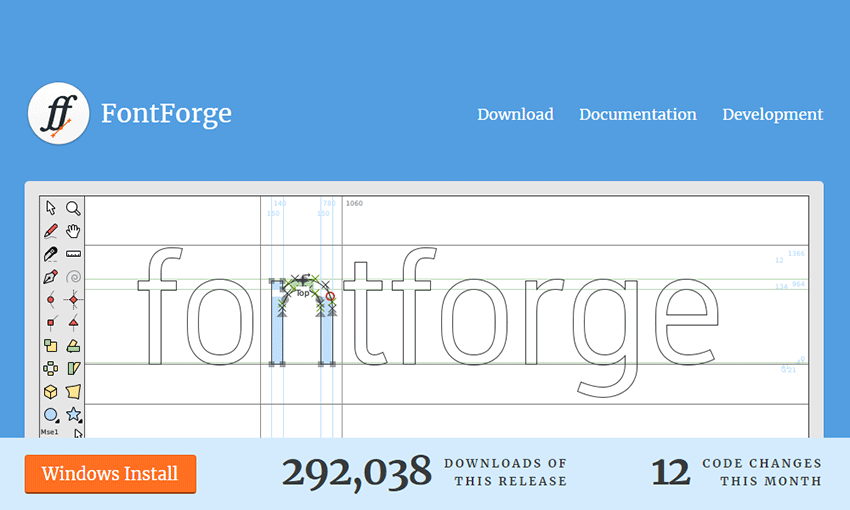
You also have to set the baseline of the font. The Xs are where your glyphs will be and the characters are a reference to know the correct encoding. It’ll show a bunch of rectangles with red Xs and characters on top of them. FontForge requires that only a single path exists. Then click on Path > Union in menu bar to make it all a single path. Then, select the tool Edit paths by nodes (F2), hold shift and click on every piece until all is selected. This assures nothing extra is hanging around. When finished a glyph, select all the pieces, do an invert selection command and delete. The width is not really important, because it’s defined per glyph, but the height is defined for the font (unless you have a vertical system) Create a base file with all the guides, specially the baseline, and use it as a start. My recommendation is to create an image of 1000×1000 pixels (or 1024×1024 if you intend to create a TrueType font, as it requires the height to be a power of two, though FontForge is able to rescale it if you want). As it works directly with SVG (a vector graphics image format) and FontForge can import them directly too, it’s a natural process. Picture 1: The design for short i in Inkscape. You can even use FontStruct to do it, depending of how simple are the glyphs.
#Fontforge help how to#
About how to do this, there’s many information on the internet easily accessible. Designing GlyphsĪ glyph is “an image, often associated with one or several characters” according to the FontForge glossary. The first step is to design such images that will compose your font. Even as sort of “programming language”, I found it easier to understand than the OpenType lookup tables, but it does have some bugs that annoyed me. There’s also Graphite, a script language to help creating complex features in fonts. They may seem outdated, but there’s no actual more recent version of FontForge (unfortunately).
#Fontforge help install#
* Edit: If I recall correctly, I used a pre-built installer package to install it on Windows. Both are free open source softwares, so you only have to spend your internet connection to download them. The only caveat is that FontForge is a pain to install under Windows, but I managed to do it. I used basically two softwares to create the font for Xiis: Inkscape, a vector graphics editor, and FontForge, an outline font editor. To view the description of Xiis, itself, along with a link to font file, check the document at.

It actually became longer than I originally intended, but I believe it has the right amount of detail. It is a guide that will explain the general process I used to create Xiis and what each function do (specially about lookup tables, something I really suffered to understand how they work). This is not a tutorial, I would say, because it’s not (much) a step-by-step directions. So, to help other people that might try to create similar systems, I’ll try to describe my journey in this endeavor. If I was designing a standard alphabet, none of these troubles would happen to me, but, inspired by Hangul, I followed a different way. When I decided to make my own writing system (or a conscript, for short), I couldn’t tell how difficult it would be to actually develop a computer font for it.
#Fontforge help pdf#
A PDF version of this guide can be found at Content


 0 kommentar(er)
0 kommentar(er)
